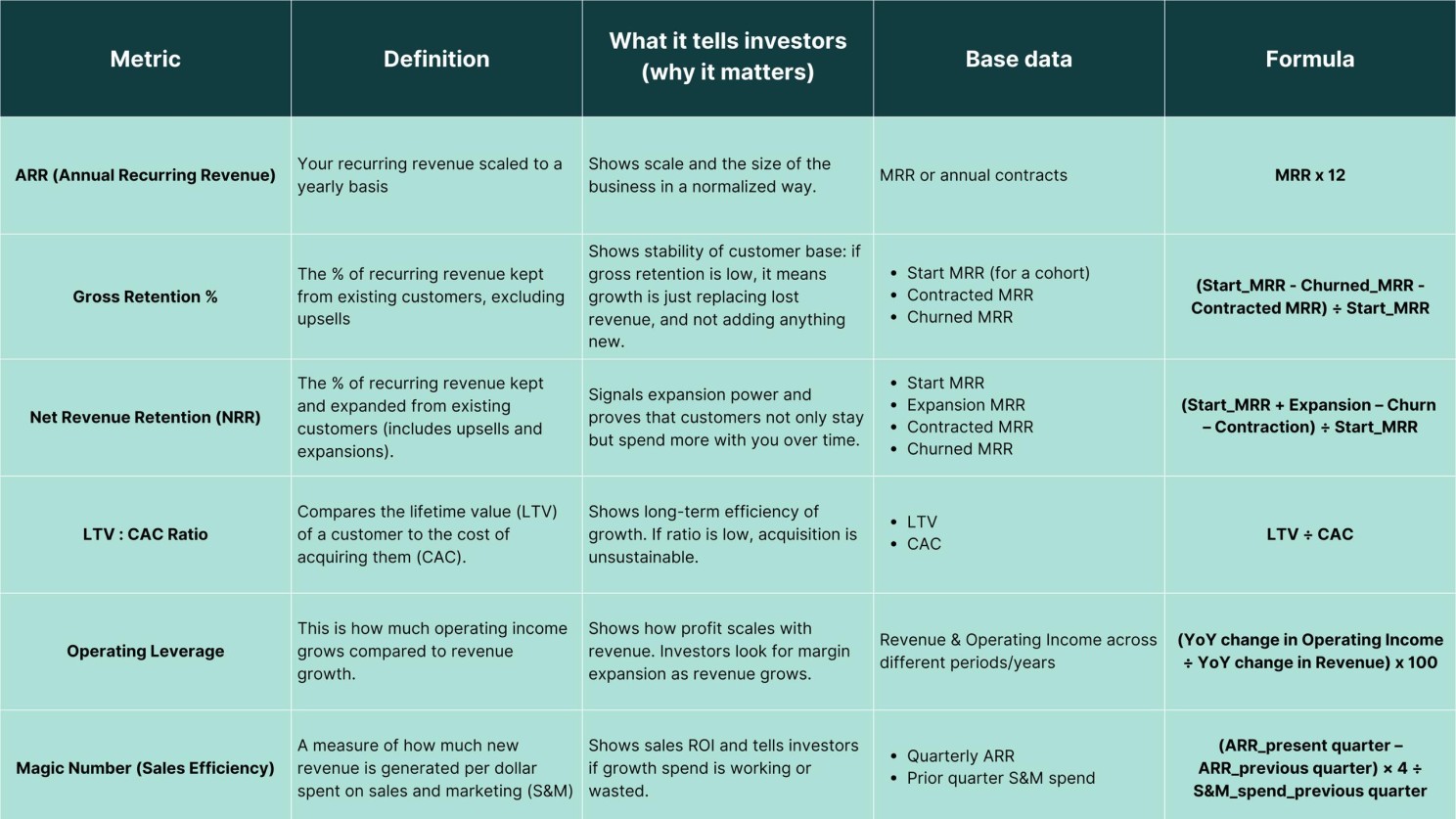Every founder has pitched their startup’s story multiple times, but the truth is, investors need more than a story. They want proof that your idea is viable today, scalable tomorrow, and backed by a clear path to profitability. That proof comes through your financial model.
While you can outsource its creation, you’re ultimately responsible for knowing if the model is credible, what assumptions it’s built on, and how to use it as a growth tool. Done right, a financial model validates your strategy, demonstrates your potential, and gives you a roadmap for spending, hiring, and scaling.
This article will show you the questions to ask before building, the investor-facing metrics to include, and the pitfalls to avoid, so you can stop presenting numbers and start owning the financial story of your startup.
Before the Model, First Steps
A financial model is more than a spreadsheet. It tells the numerical story of your business and communicates your business’s potential. To make your model credible, you first need clarity on the fundamentals of your company and the environment it operates in.
Before you build, ask yourself:
- What is the purpose of your model? Is it for fundraising, financial planning, or strategic decision-making?
- What is your business model? How does your business make money?
- What is your cost structure? What do you spend money on, and how?
- Who are your competitors, what is their business model, and market performance?
- What is your macro environment? What external factors could affect your business or shape your industry?
The answers to these questions shape the assumptions in your model and the metrics investors will care about. When your assumptions are grounded in data, whether from your own historical data, competitor benchmarks, or market research, your model becomes a reliable guide for growth. If they are overly optimistic, it could damage your credibility with investors and possibly mislead your strategic decisions.
Building Your Model - Investor-Facing Metrics
Investors don’t just review your financial model for accuracy; they read it for signals about profitability and growth. Alongside standard figures like gross margin or revenue growth, your model should highlight specific metrics that prove your business can scale.
The metrics you prioritize will guide the specific data you include in your model. By selecting the right metrics, your model tells a credible story about your startup and speaks directly to investor priorities.
Below, we outline key investor-facing metrics for early-stage and growth-stage startups.
Early-Stage Investor-Facing Metrics

Growth Stage Investor-Facing Metrics

After the Model - Pitfalls to Avoid
Beyond getting your CFO or an external firm to build your model, you must know how to use it to sell your vision to investors and guide your company’s growth. That means spotting and avoiding common mistakes, such as:
- Unrealistic assumptions: Your model should reflect reality, not wishful thinking. Anchor revenue and growth projections to industry benchmarks, historical data (if any), and economic conditions. Inflated assumptions may seem impressive at first, but they quickly damage credibility.
- Vague assumptions: Numbers need context. Replace generic goals like “60% revenue growth” with the drivers that get you there, e.g., customer acquisition, pricing changes, or cost adjustments. If you’re fundraising, show exactly how new capital will be deployed.
- Excluding key data: Omitting churn, refunds, revenue contractions, or payment delays can make cash flow look stronger than it is. Include all relevant data to avoid misleading yourself and investors.
- Underestimating costs: Investors want to see a full picture of your operating expenses. Capture both early-stage needs (hosting fees, regulatory costs, support) and how those expenses grow with scale.
- Single-trajectory forecasts: No plan is bulletproof. Run best, base, and worst-case scenarios, and conduct sensitivity analysis to understand how shocks, such as higher churn or rising costs, impact your business.
- Overreliance on templates: Templates can guide structure, but a copy-and-paste model signals inexperience. Tailor your model to reflect your business model and industry realities.
Conclusion
As a founder, your financial model isn’t just a document for investors; it’s a tool for steering your business. You may not be the one who builds it from scratch, but with the insights shared here, you now know how to review, guide, and ultimately wield your model with confidence. Treat it as a living roadmap: question the assumptions, include the right metrics, avoid common pitfalls, and adapt it as your business grows. When you do this, your model moves from mere numbers in a sheet to a credible, investor-ready story of your strategy and a powerful tool to drive sustainable growth.



